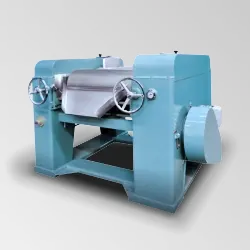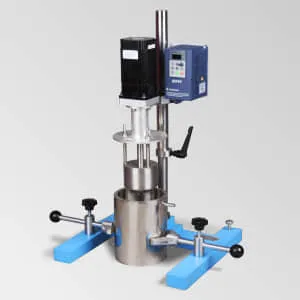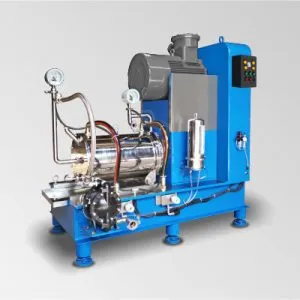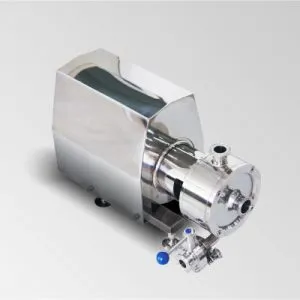Introduction of Fine Impact Mill
A fine impact mill is a machine designed for reducing particle size by utilizing the impact of high-speed rotating hammers or pins. The mill consists of a grinding chamber, a rotor, and a classifier. The material to be processed enters the grinding chamber and is subjected to the force of impact between the hammers and the particles. As a result, the material is pulverized into fine particles of consistent size and shape.
This SeFluid’s superfine powder mill series is composed of crushing host, cyclone separator, pulse dust box and centrifugal fan. It is suitable for processing a variety of materials, and the particle size is adjustable without machine stopping. The output particle size is uniform with fineness up to 10-5 um.
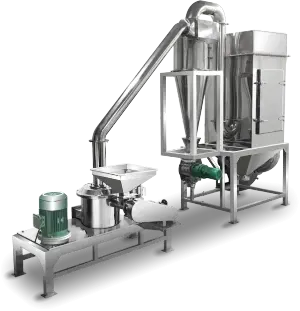
specification
Power
13.5-73.1 kw
Capacity
30-1000 kg/h
Fineness
80-400 mesh
Material
SS304, SS316
Principle of Fine Impact Mill
The working principle of an fine impact mill is based on the collision between the incoming feed material and the rotating impellers or hammers. When it works, the feed material is introduced into the grinding chamber of the impact mill through a feed chute or hopper. As the material enters the grinding chamber, it is struck by the rapidly rotating impellers or hammers. The impact force generated by the impellers or hammers causes the material to break into smaller pieces and particles.
The size of the particles produced by the fine impact mill can be controlled by adjusting the speed of the impellers or hammers, the size and shape of the grinding chamber, and the size and shape of the feed material. There is a series of steps that result in the reduction of particle size. Here’s a breakdown of the working principle:
Material Introduction
The material to be processed is introduced into the grinding chamber of the machine. This can be done through a hopper or a feed mechanism, depending on the specific design of the mill.
Impact Zone
Once inside the grinding chamber, the material comes into contact with the high-speed rotating hammers or pins. These hammers or pins are typically attached to a rotating rotor, which generates the necessary impact force.
Impact and Fragmentation
As the rotor spins rapidly, the hammers or pins strike the material with significant force. This impact causes the material to break apart into smaller particles. The energy from the impact is transferred to the particles, leading to fragmentation and pulverization.
Classification
After the initial impact, the resulting particles continue to move within the grinding chamber. In many impact mills, there is a built-in classifier mechanism that separates the finer particles from the larger ones. This classifier may be a static screen or a dynamic air classifier, depending on the mill design.
Fine Particle Collection
The finer particles, which have reached the desired particle size, pass through the classifier and are collected in a separate collection chamber or container. These particles are typically the product of interest and are often used in further processing or packaging.
Oversize Particle Re-circulation
The larger particles that do not pass through the classifier are directed back into the grinding chamber for further impact and size reduction. This re-circulation process continues until the desired particle size distribution is achieved.
The specific design and configuration of fine impact mills can vary. Some mills may have multiple stages of impact, where the material undergoes several rounds of impact and classification for further refinement. Additionally, the material being processed can also impact the design of the mill, as different materials may require specific rotor configurations, hammers, or pins to achieve optimal grinding performance.
Advantages of Fine Impact Mill
Fine impact mills have a wide range of applications in various industries, including:
Efficient Grinding
The machine is designed to grind materials quickly and efficiently, with minimal heat generation. This ensures that the material is ground to the desired size without any degradation or damage.
Low Maintenance
Fine impact mills have fewer moving parts than other types of grinding equipment, which reduces the need for maintenance and repair. This results in lower downtime and higher productivity.
Versatility
The machine can be used to grind a wide range of materials, including soft to medium-hard materials, fibrous materials, and heat-sensitive materials. This makes them ideal for use in industries such as food processing, pharmaceuticals, and chemicals.
Consistent Particle Size
The machine produces particles with a consistent size distribution, which is critical for achieving the desired product quality and performance.
Applications of Fine Impact Mill
Fine impact mills have a wide range of applications in various industries, including:
Food Processing
It is used to grind spices, herbs, and other food ingredients into fine powders. They are also used to grind grains and other materials for the production of flour and other food products.
Pharmaceuticals
Fine impact mills are used to grind active pharmaceutical ingredients (APIs) and excipients into fine powders for use in tablets, capsules, and other dosage forms.
Chemicals
The machines are used to grind chemicals into fine powders for use in various chemical processes, such as catalysis and polymerization.
Minerals
The machine is used to grind minerals and other materials into fine powders for use in various industrial processes, such as mineral processing and cement production.
Request for Quotation
NEWS
contact
No 28, Fengxia Rd, Hefei, Anhui Province, China 201400
Phone: +86 156 6910 1862
Fax: +86 551 5843 6163
moc.diulfesobfsctd-425c46@selas








